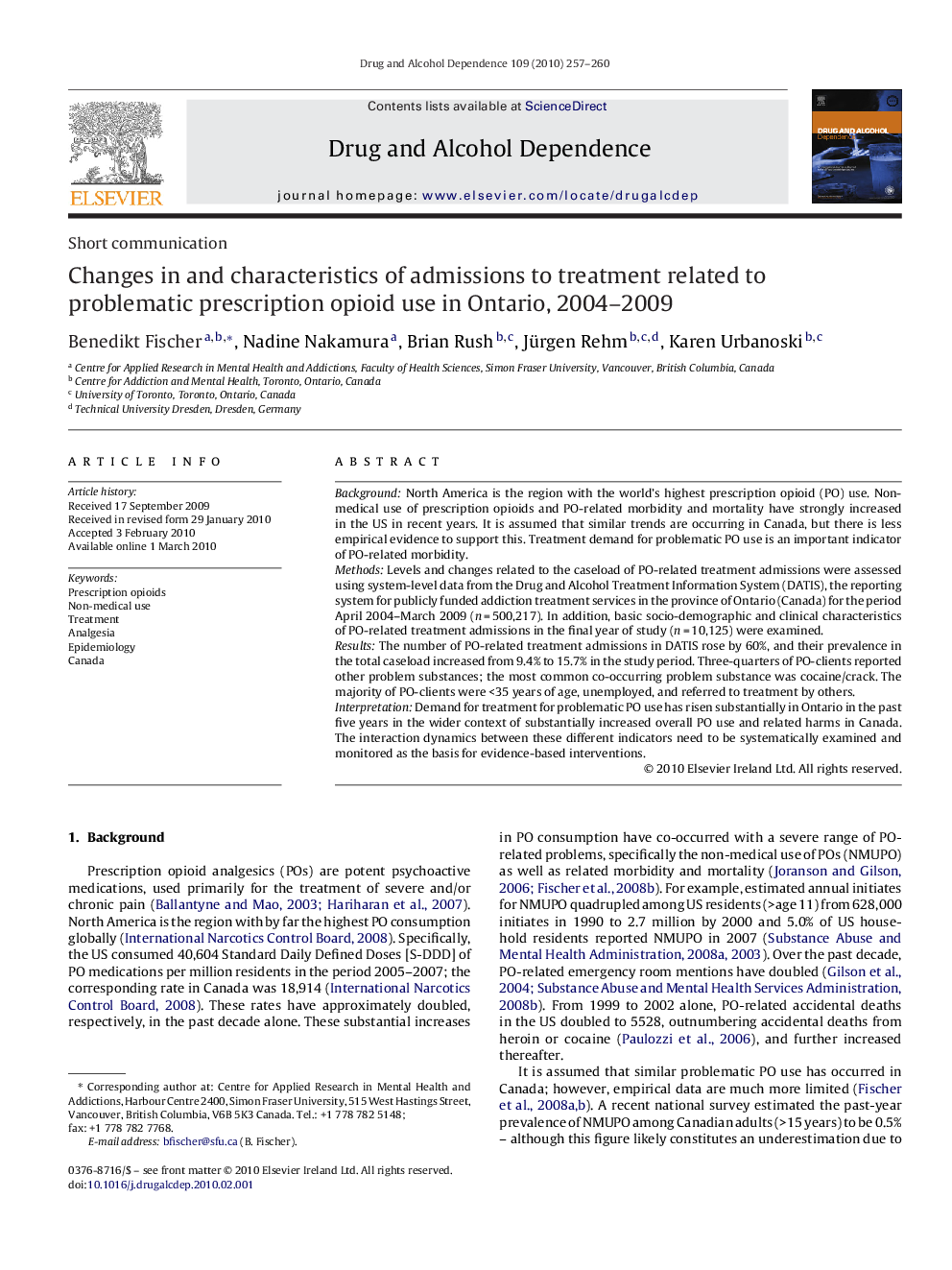| Article ID | Journal | Published Year | Pages | File Type |
|---|---|---|---|---|
| 1070790 | Drug and Alcohol Dependence | 2010 | 4 Pages |
BackgroundNorth America is the region with the world's highest prescription opioid (PO) use. Non-medical use of prescription opioids and PO-related morbidity and mortality have strongly increased in the US in recent years. It is assumed that similar trends are occurring in Canada, but there is less empirical evidence to support this. Treatment demand for problematic PO use is an important indicator of PO-related morbidity.MethodsLevels and changes related to the caseload of PO-related treatment admissions were assessed using system-level data from the Drug and Alcohol Treatment Information System (DATIS), the reporting system for publicly funded addiction treatment services in the province of Ontario (Canada) for the period April 2004–March 2009 (n = 500,217). In addition, basic socio-demographic and clinical characteristics of PO-related treatment admissions in the final year of study (n = 10,125) were examined.ResultsThe number of PO-related treatment admissions in DATIS rose by 60%, and their prevalence in the total caseload increased from 9.4% to 15.7% in the study period. Three-quarters of PO-clients reported other problem substances; the most common co-occurring problem substance was cocaine/crack. The majority of PO-clients were <35 years of age, unemployed, and referred to treatment by others.InterpretationDemand for treatment for problematic PO use has risen substantially in Ontario in the past five years in the wider context of substantially increased overall PO use and related harms in Canada. The interaction dynamics between these different indicators need to be systematically examined and monitored as the basis for evidence-based interventions.
